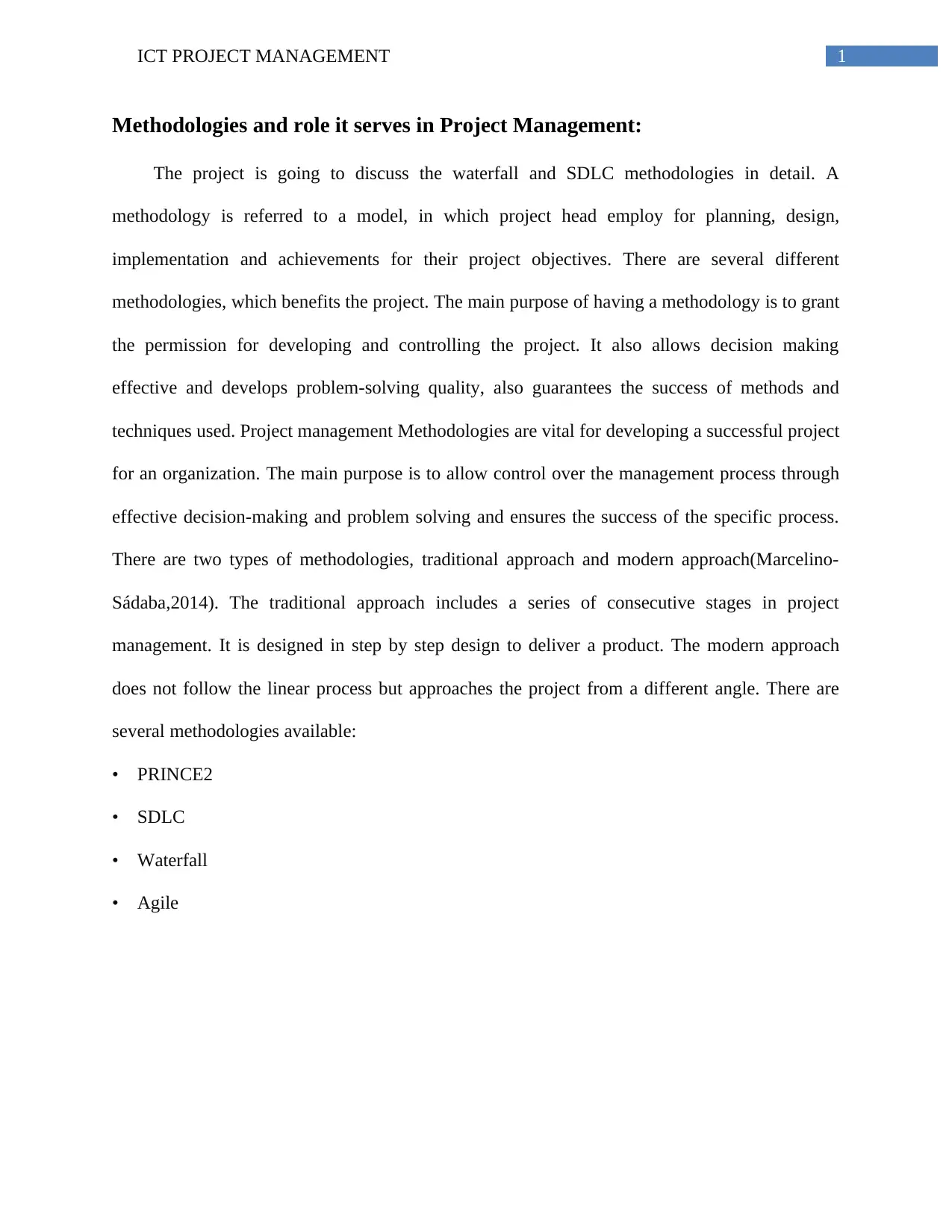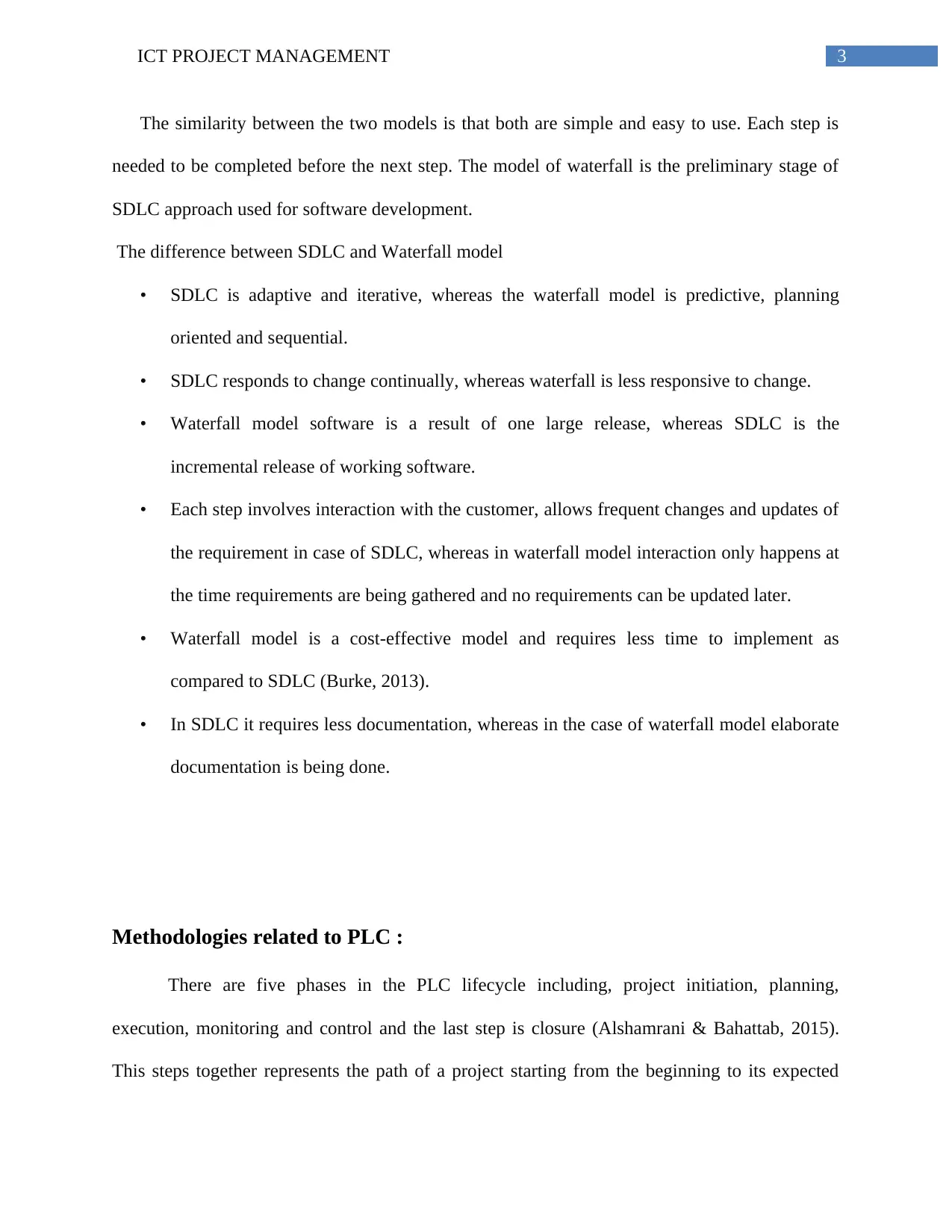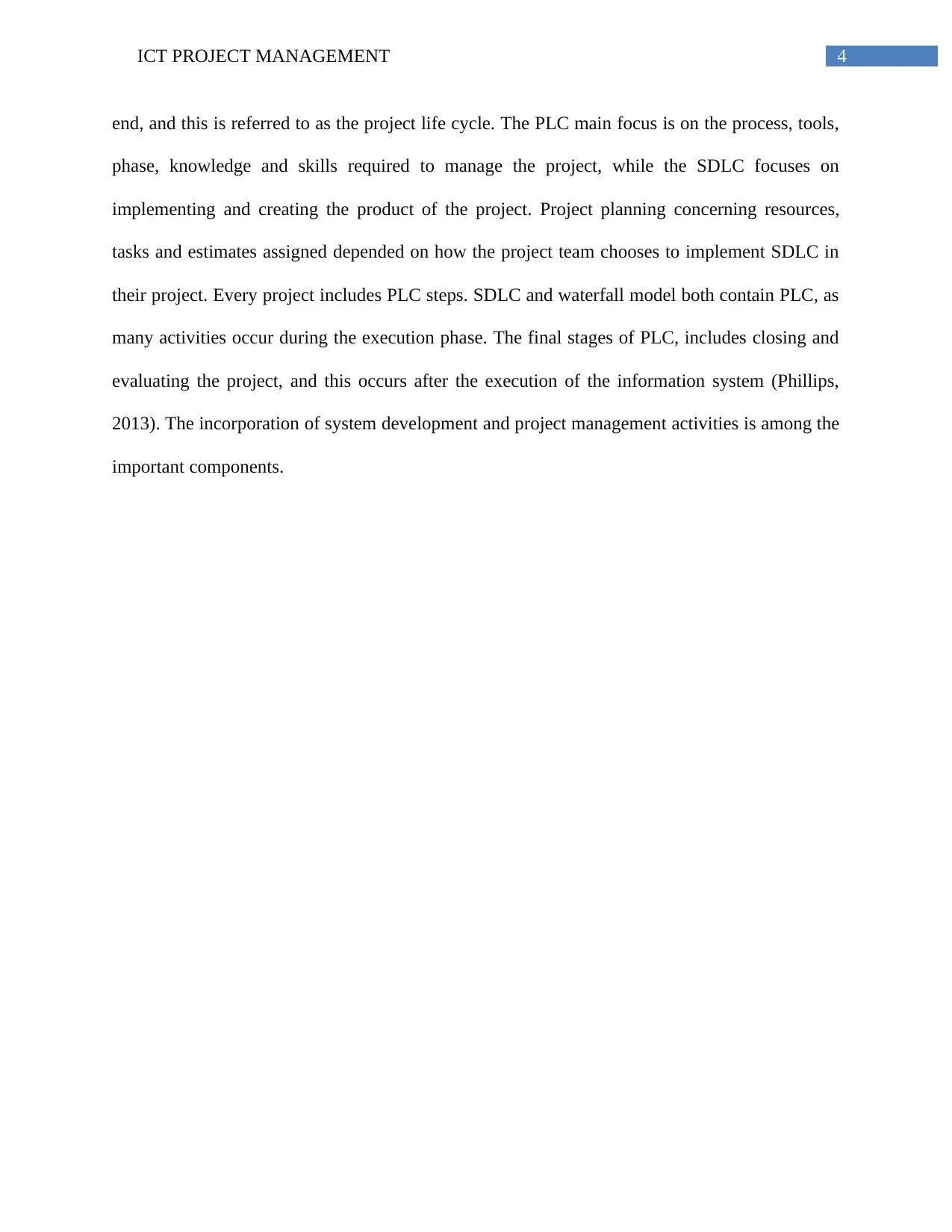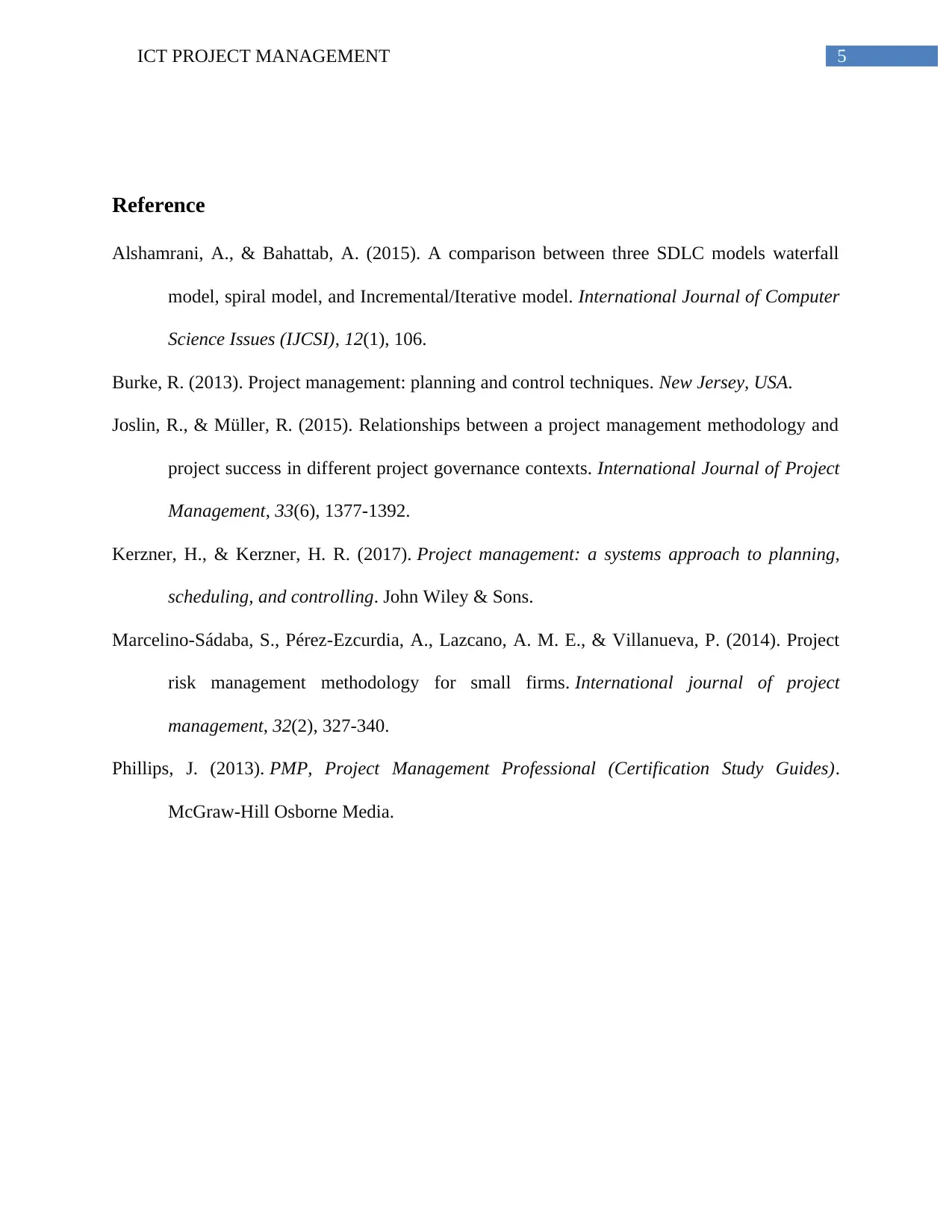Analysis of SDLC and Waterfall Methodologies in ICT Project Management
VerifiedAdded on 2023/06/08
|6
|1018
|140
Report
AI Summary
This report provides a detailed analysis of SDLC (Software Development Life Cycle) and Waterfall methodologies in the context of ICT project management. It outlines the core principles, steps, similarities, and differences between these two methodologies, highlighting their applications in project planning, execution, and control. The report also discusses the relationship of these methodologies to the Project Life Cycle (PLC), emphasizing the importance of integrating system development activities with project management processes. It further elucidates how each methodology addresses project requirements, adaptation to change, release strategies, customer interaction, cost-effectiveness, and documentation needs, offering a comprehensive understanding of their respective strengths and weaknesses in managing ICT projects. Desklib offers this document as part of its extensive library of student-contributed assignments.
1 out of 6






